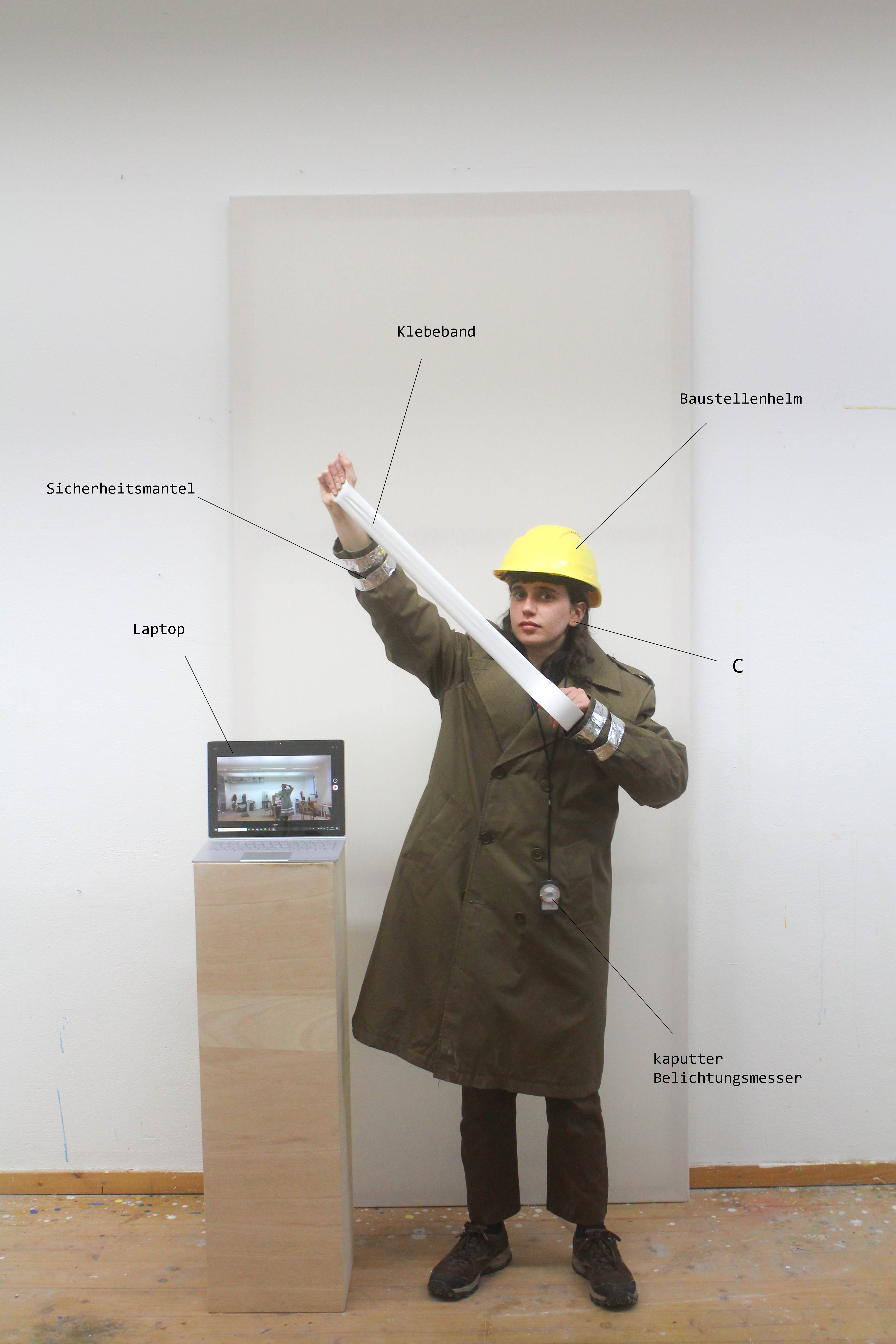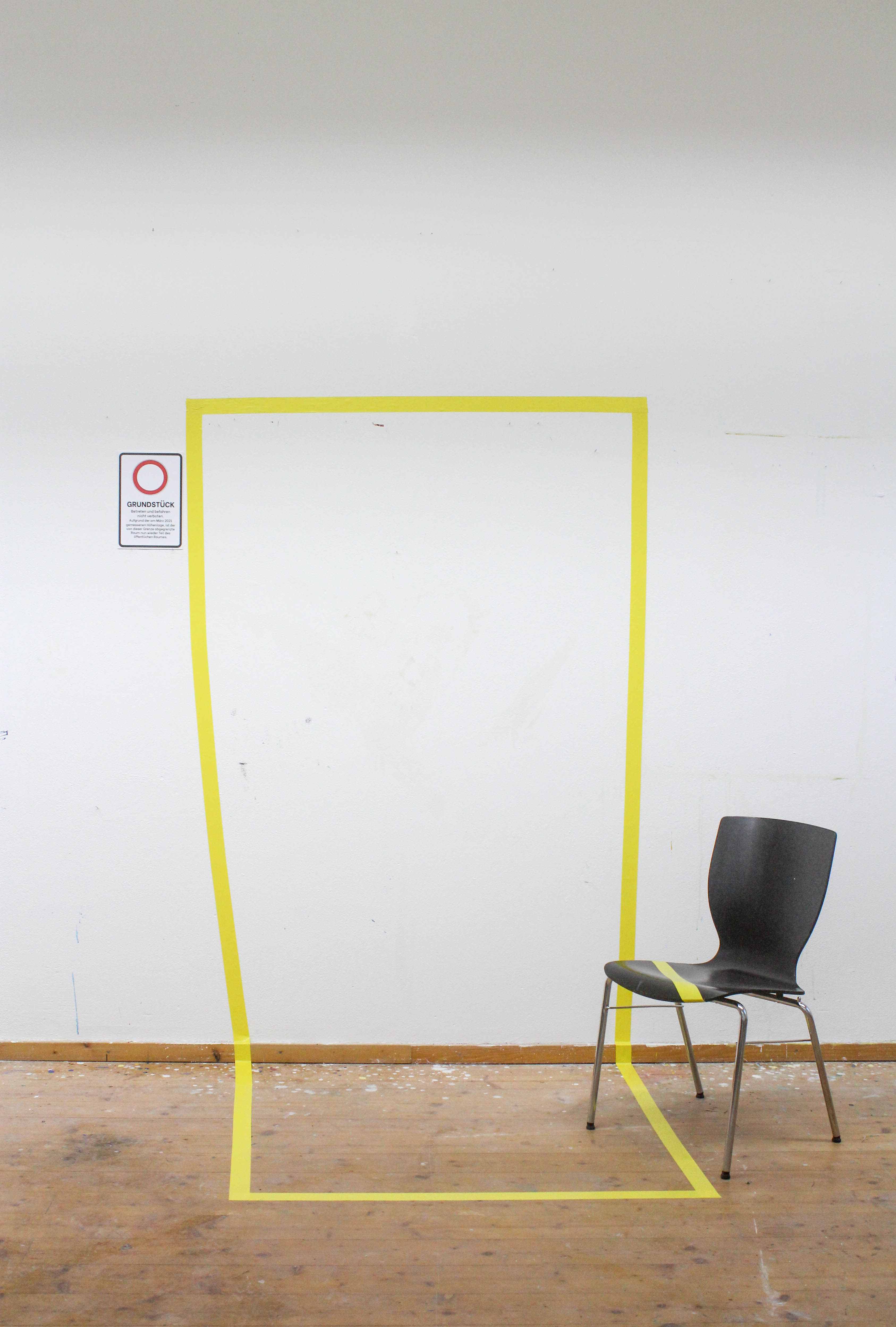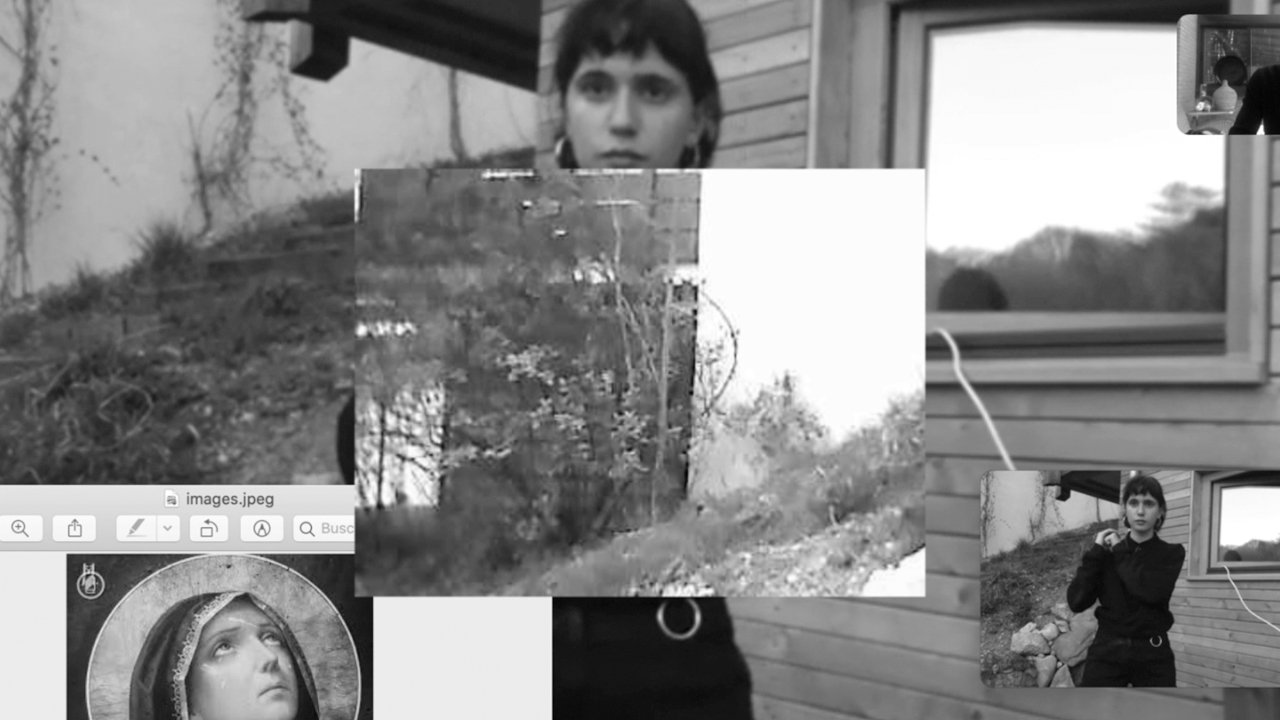2020 / In collaboration with Jos Strobl
In the winter of 2020, culture in Munich took a forced pause. C and J saw in this situation the opportunity for the unrealistic brand new start they had been dreaming about for the art world. Through a manifesto, they declared (again) the death of the old art system and presented a series of rules for a new art. Among others, these principles stated that the artist was now a god, museums and galleries could only function as cemeteries, and the new art, rta or tra (reiterated wordplay on the document; Kunst, Unstk, Nstku...) would exclusively be found inthe public space. A thousand copies were printed and distributed into the mailboxes of the five central neighbourhoods of Munich. C and J chose for this action, an outfit that would mix the businessman look with a neon “bauarbeiter”-like-vest that would embed them into the public space imaginary.
2020 /
Schulweg 16 was a durational fictional archaeologic project that took place in the Summer of 2020 at an abandoned villa in the surroundings of Munich. After two months of collecting objects and studying the place, the project turned into an exhibition setting and was, simultenously, open to the public through a performatic guided tour.
To avoid its imminent disappearance, the building was turned into a digital ruin that could be visited under the domain <schulweg16.site>. Robert Smithson wondered once if Passaic had replaced Rome as the eternal ruin; but how naive to talk about eternity before the existence of the internet! Now Schulweg 16 should overtake such a title, as a ruin closer to our generation.
Grundstück
The definition of private property states that below and above a certain attitude this would not belong to its owner. Allowing aeroplanes to fly over it and subterranean water to pass by. C and J used this parameter to make measurements, according to free interpretation, that proclaim private property as non-private. Their equipment for this included tape to delimitate the new terrain that belonged to the public landscape and a shield to declare it.




LG aus München
2020/
In September 2020 a metal piece left its home at a construction site in Berlin and travelles to Munich to enjoy the last days of autumn. Once there, it sent a series of postcards back to its fellow colleagues and relatives. Sometime afterwards, the story is reconstructed on a video that collects different testimonies of the people who had contact with it in the bavarian capital. For instance, a love affair, some temporary roommates or the DHL worker with whom he travelled back to Berlin. During this time, none of the workers noticed the piece’s absence, among hundred or thousand of identical ones.









Untitled
2020 / Project in context of the Klasse Pitz group exhibition “PROZESS*ION Prozeß*ion process*ion” for the Annual Exhibition at the AdbK/
As part of this 4-days-intervention, where the students of the Klasse Pitz marched from the Akademie to four different locations, some architectural details where moulded and reinstalled in new locations. Some of the reproduced objects have remained unnoticed until today and continue to enjoy the company of other buildings.

(^ Click to see on street view)
Spanish Embassy
2020 /In collaboration with Sergio Casasnovas (SEKA Grupp)/
How can we refer to nation as a geographic location, when our cities are conformed with people from all around the globe? Commemorative plaques, shield and monuments remind us daily where we are and who we are. C and S designes a ceramic mosaic floor, made out of reproductions of Spanish sewers and planned to place them in the streets of Munich. But, what does it mean to have a Spanish sewer in Germany? Could we say that a part of its territory has been taken away by this country? Could Spanish emigrants seek refuge othis metal plate?


Vacaciones en España
2020 / In collaboration with Sergio Casasnovas (SEKA Grupp)/
In Holidays in Spain, SEKA Grupp “travels” through technology and traditional symbology to the Spanish Semana Santa. The embodiment and reinterpretation of such actions takes shape into a tutorial-like version of Val del Omar’s triptic. This video performance in an attempted return to the country, in a geographical sense of the word, but also back to a hankered normality of the home country, as it was recorded during the first lockdown of the corona pandemic.




→Watch the video here.
→Vea el video aquí.
Conversaciones fotográficas
2019 /
“Felechosa, un pueblo en el Valle de Aller, Asturias. Escenario de este teatro. Se abre el telón; aparecen hombres con boina y escopeta en un decorado consistente en un hórreo, una radio y una nevera sin enchufar. Los actores se sitúan inmóviles, atemporales.
¿Se puede construir una fotografía? ¿Y el tiempo?
Tiempo y realidad son dos variantes que se pueden trabajar, anular o modificar a través de la representación, en este caso, la fotografía. Si consideramos que la fotografía, no es un mero medio de representación, sino el objeto o la escena representada en sí, damos por hecho que ese tiempo detenido está en nuestro poder, viviendo en un tiempo ajeno al suyo. Un espacio temporal detenido y atrapado.
El carrete de 120 mm fue hecho por Carmen Arias en el verano de 2019; el de 35 mm, por su bisabuelo en el verano de 1954.
//
Felechosa, a village in the valley of Aller, Asturias. Stage for this theater piece. The curtain opens, men with beret and shotguns appear into a set that consists of a raised granary, a radio and a broken fridge. The actors appear still, atemporal.
¿Is it possible to build a photograph? ¿And time?
Time and reality are two variants that can be worked, cancelled or modified through representation, in this case, through photography. If we considerate that photography is not just a medium of representation, but the object or the scene represented itself, we will asume that this interrumpted time is under our control, living in a different time. A temporal space, stopped and trapped.
The 120mm film was made by Carmen Arias in the summer of 2019; the 35 mm, by her great grandfather in the summer of 1954.”








